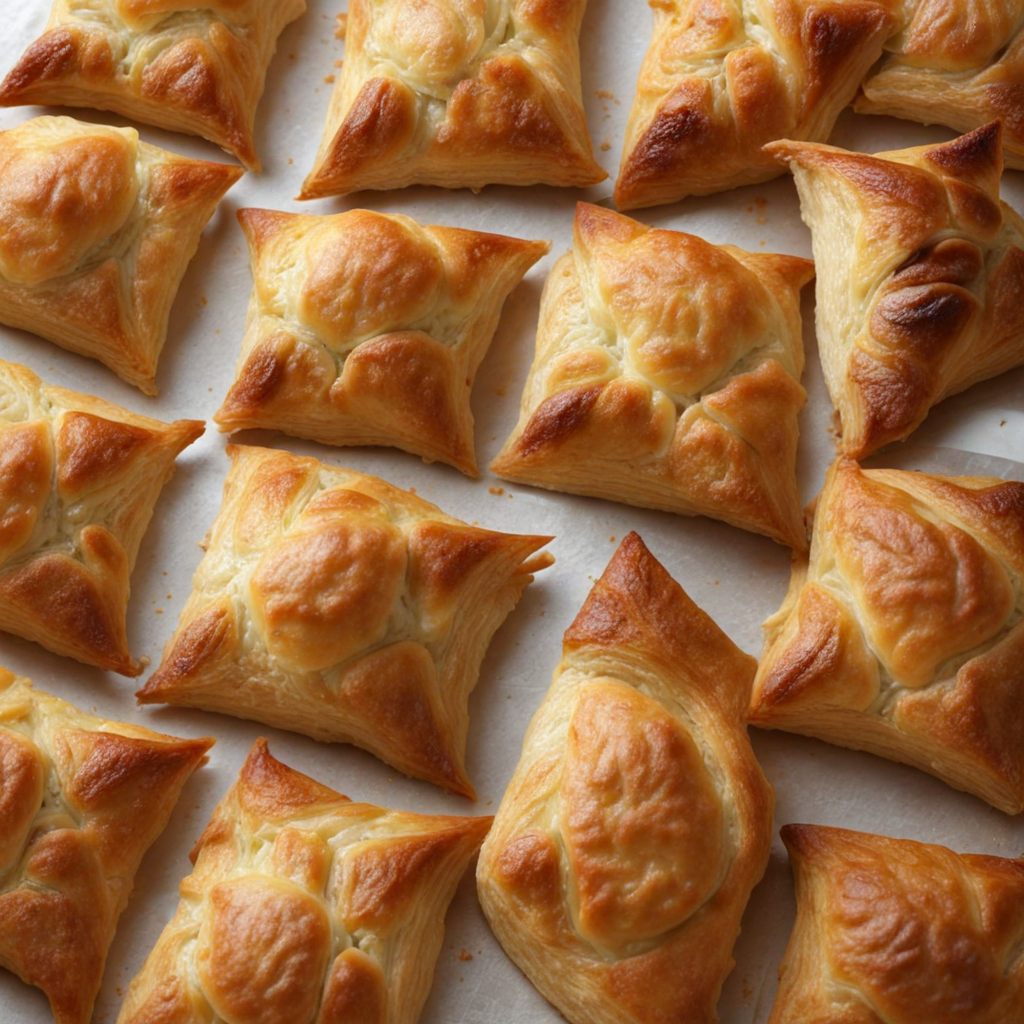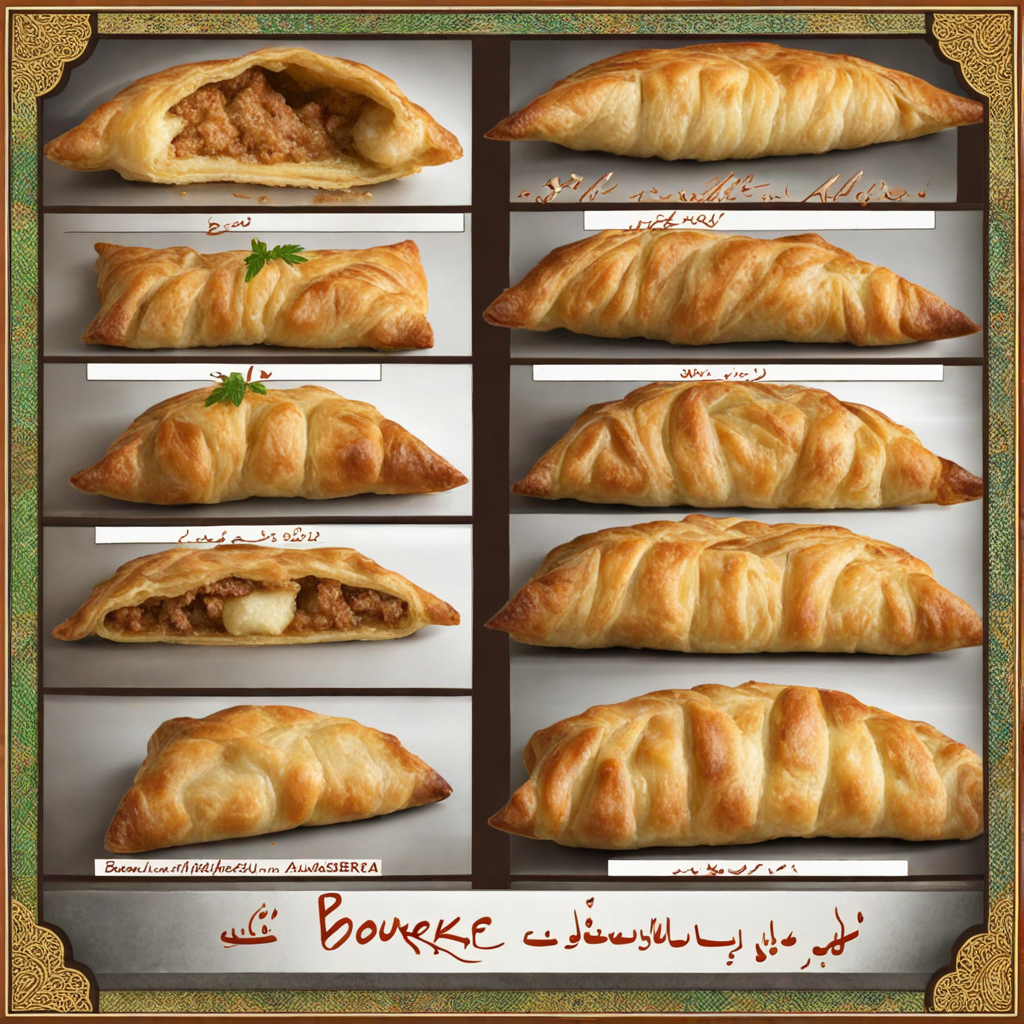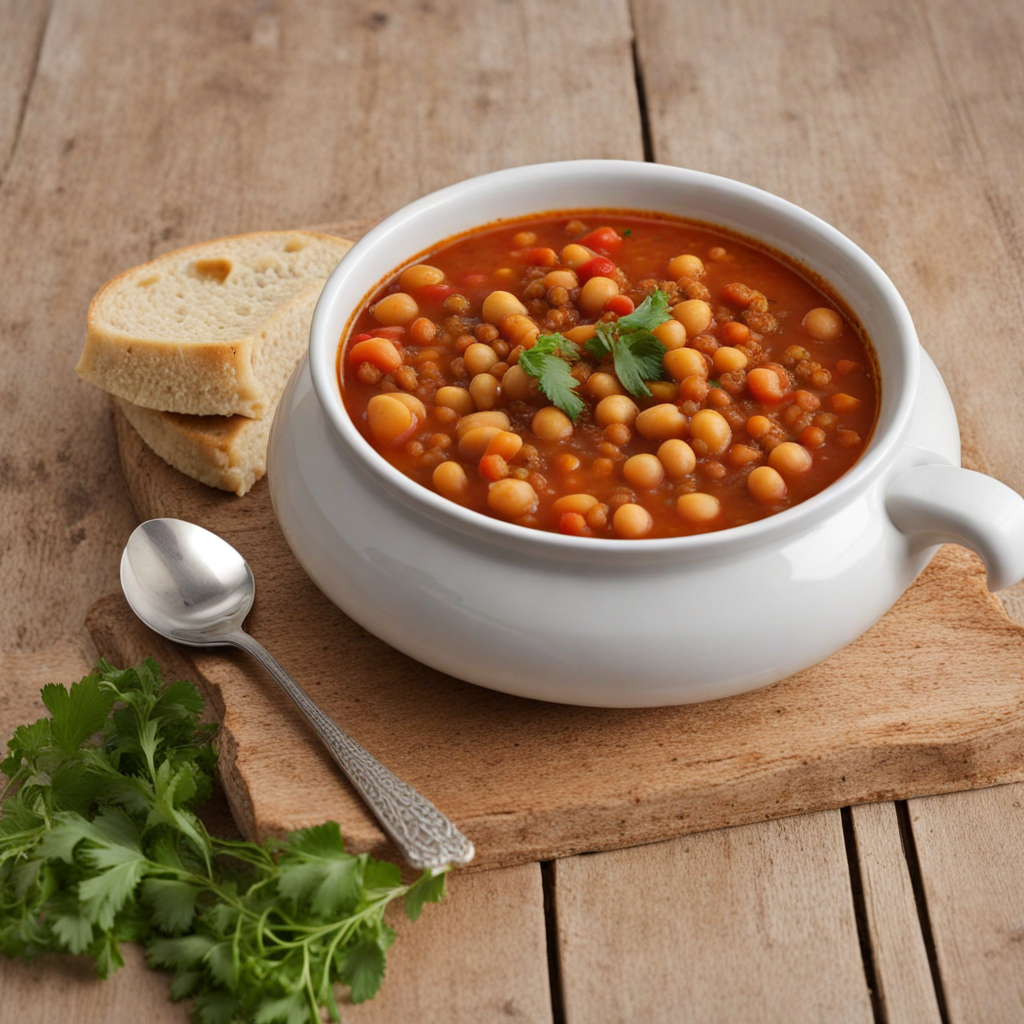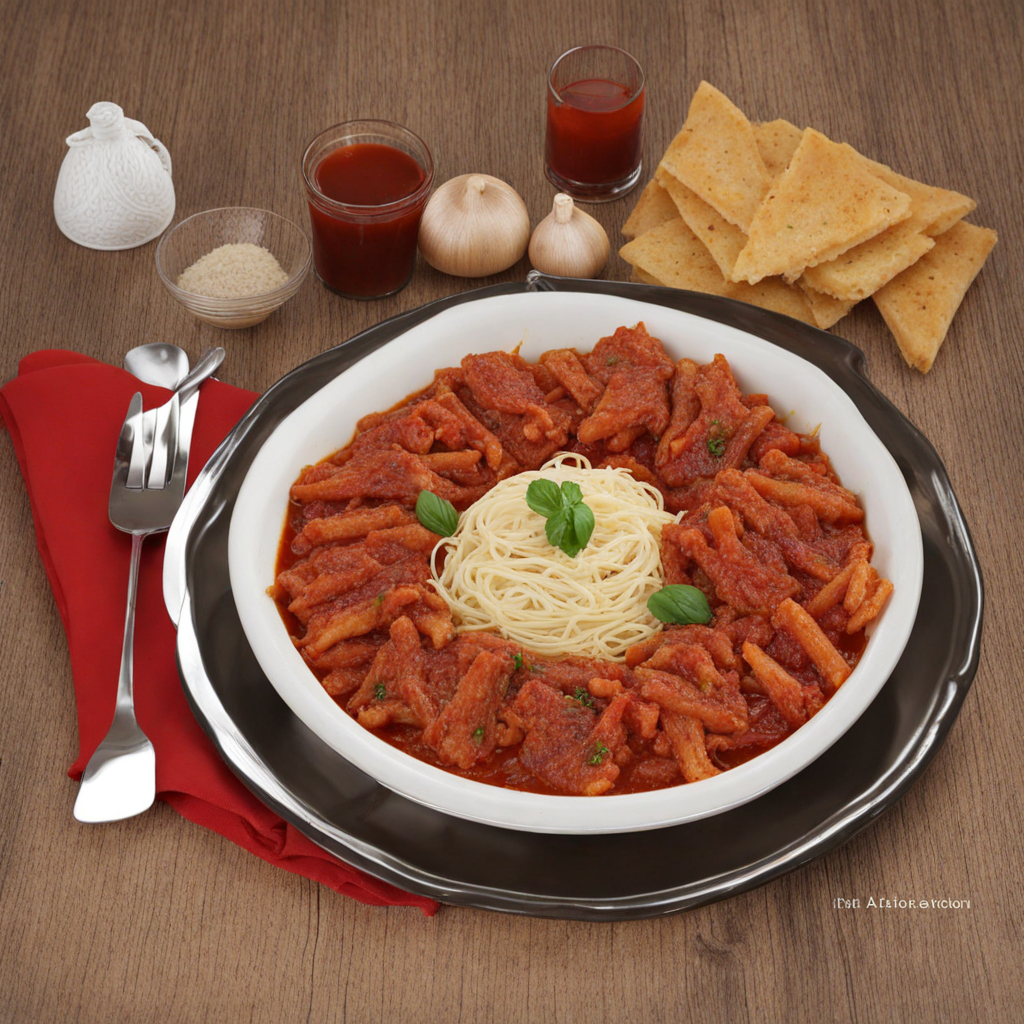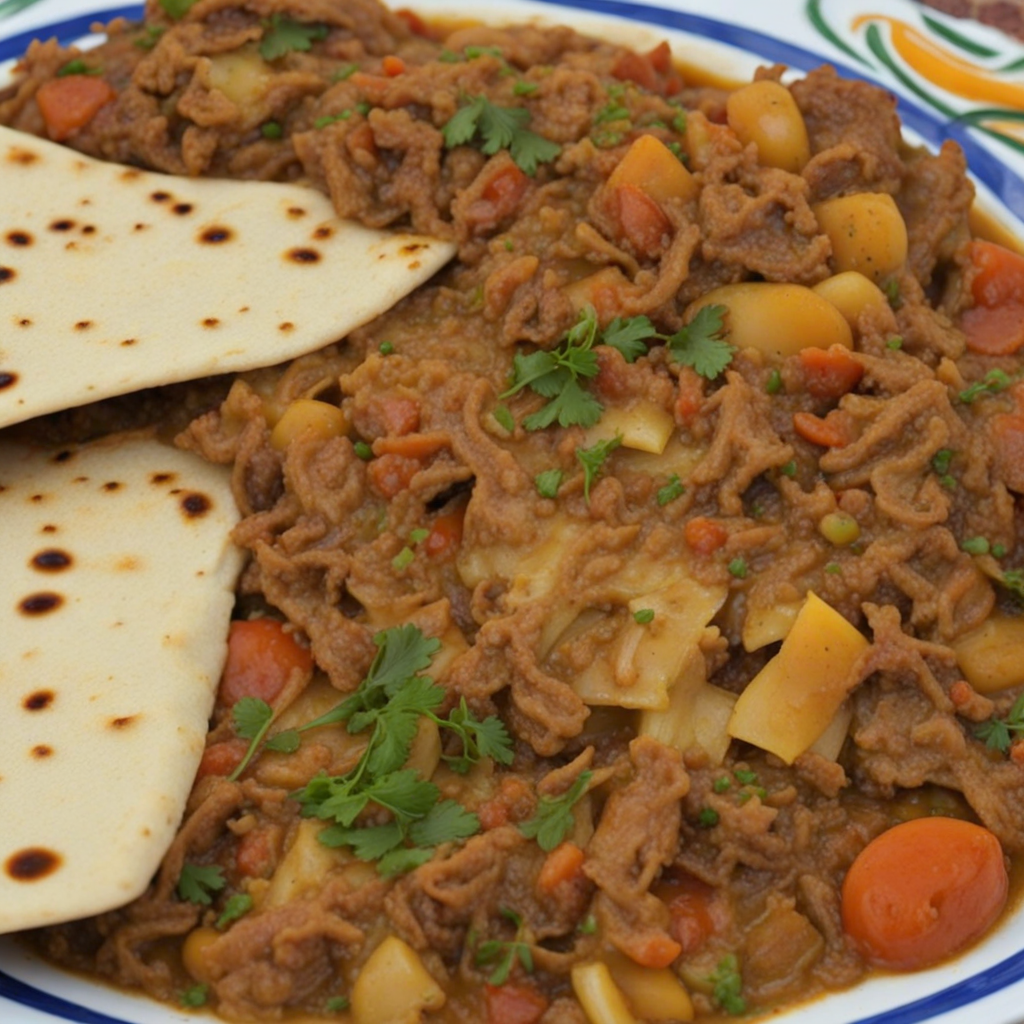Bourek
Bourek is a delightful pastry that hails from Algeria, characterized by its flaky, golden-brown exterior and a rich, savory filling. Typically made from thin layers of dough known as 'warqa' or 'brick', Bourek is often filled with a variety of ingredients, including spiced minced meat, potatoes, cheese, or vegetables. The combination of these fillings gives each bite a burst of flavors, enhanced by the aromatic spices such as cumin, coriander, and paprika that are commonly used in Algerian cuisine. Whether deep-fried or baked, Bourek offers a satisfying crunch that contrasts beautifully with its tender interior. The preparation of Bourek is an art in itself, as the dough is expertly rolled out to achieve an almost translucent texture before being filled. The fillings are usually seasoned to perfection, often incorporating ingredients like fresh herbs and nuts, which contribute to the complexity of flavors. Bourek can be enjoyed in various forms, from small, hand-held snacks to larger, more elaborate servings, making it a versatile dish suitable for any occasion. It is commonly served during festive gatherings and special occasions, symbolizing hospitality and celebration in Algerian culture. This delectable pastry is often accompanied by dipping sauces or a side of salad, enhancing its appeal and complementing its rich flavors. Bourek is not only a staple in Algeria but has also gained popularity in various North African and Middle Eastern cuisines, making it a beloved dish for food enthusiasts looking to explore new tastes. With its unique combination of textures and flavors, Bourek is a culinary experience that promises to captivate your palate and leave you craving more.
How It Became This Dish
The History of بوراك (Borek) in Algeria: A Culinary Journey Introduction Borek, known as بوراك in Arabic, is a savory pastry that holds a special place in Algerian cuisine and the broader culinary landscape of North Africa. This delectable dish, characterized by its flaky layers and rich fillings, has a storied history that reflects a blend of cultural influences, regional ingredients, and evolving cooking techniques. This essay delves into the origins, cultural significance, and developmental journey of Borek in Algeria, illustrating how it has become a cherished food item synonymous with tradition and communal gatherings. Origins and Early Influences The history of Borek can be traced back to the Ottoman Empire, which spanned from the late 13th century until the early 20th century. The Ottomans were known for their diverse culinary traditions, combining influences from the Middle East, Central Asia, and the Mediterranean. The concept of stuffed pastries likely originated in this vast empire, with variations emerging in different regions. In Algeria, the introduction of Borek coincided with the rise of Ottoman influence in the region during the 16th century. The Ottoman Empire established a significant presence in North Africa, and with it came culinary practices that would intertwine with local traditions. This fusion gave rise to the Algerian version of Borek, which adapted the original recipe to include local ingredients and flavors. Cultural Significance Borek in Algeria is more than just a food item; it is a symbol of hospitality and community. Traditionally served during special occasions such as weddings, religious celebrations, and family gatherings, Borek is often associated with joy and festivity. In Algerian culture, the act of sharing food, especially a dish as labor-intensive as Borek, is a way to foster connection and express generosity. Algerians take pride in their culinary heritage, and Borek stands as a testament to the country’s rich history and diverse cultural influences. The dish is often prepared in large quantities, reflecting the communal spirit of Algerian society. Families come together to roll dough, prepare fillings, and bake the pastries, making it a cherished activity that strengthens bonds among generations. Varieties and Regional Adaptations As Borek spread across Algeria, it evolved into a variety of regional adaptations, each with its unique twists. The classic Algerian Borek typically features a filling of minced meat (often lamb or beef), onions, and a blend of spices, all enveloped in layers of thin dough. However, due to Algeria's geographical diversity, different regions have developed their own versions of this beloved dish. In coastal areas, Borek may incorporate seafood, reflecting the abundance of fresh fish in the Mediterranean. Meanwhile, in mountainous regions, fillings may include locally sourced vegetables, herbs, and cheeses. The use of spices such as cumin, coriander, and paprika enhances the flavors, showcasing the rich culinary tapestry of Algeria. One particularly popular variation is Borek with eggs, where boiled eggs are incorporated into the filling, adding a creamy texture and a distinct flavor. Another version features a sweet filling, often made with nuts and sugar, which is served during festive occasions, demonstrating the versatility of this dish. Development Over Time As Algeria moved through the 19th and 20th centuries, the political and social landscape influenced culinary practices. The French colonization of Algeria from 1830 to 1962 brought about significant changes to food culture, including the introduction of new ingredients and cooking methods. French culinary techniques began to merge with traditional Algerian practices, leading to a further evolution of Borek. During this period, the use of puff pastry became popular, allowing for a lighter and flakier texture. This adaptation mirrored broader global culinary trends and showcased the dynamic nature of Borek as it continued to evolve. Additionally, the availability of new ingredients, such as butter and cheese, contributed to the development of richer flavors and textures in Borek. The post-independence era saw a resurgence of interest in traditional Algerian cuisine, with a newfound emphasis on cultural identity and heritage. Borek was embraced as a symbol of national pride and culinary authenticity. Home cooks and chefs alike began to explore traditional recipes and techniques, ensuring that the art of Borek-making was passed down through generations. Modern-Day Borek Today, Borek remains a staple in Algerian households and is often enjoyed as a street food delicacy. Its popularity has transcended borders, with variations of Borek found in neighboring countries and beyond, including Turkey, Tunisia, and Morocco. This cross-cultural exchange has allowed Borek to evolve further, with each region adding its unique flair. In contemporary Algerian society, Borek is often featured in everyday meals and special occasions alike. It serves as a bridge between tradition and modernity, with chefs experimenting with new fillings that reflect global culinary trends while honoring age-old recipes. Vegetarian Borek, stuffed with spinach and cheese, has gained popularity, catering to modern dietary preferences. Moreover, Borek has made its way into international culinary scenes, showcasing the richness of Algerian cuisine. Food festivals, cultural events, and restaurants around the world celebrate Borek, introducing this beloved dish to diverse audiences. The globalization of food culture has allowed Algerian Borek to stand alongside other renowned pastries, such as French croissants and Turkish börek, highlighting its universal appeal. Conclusion In conclusion, Borek is not just a dish; it is a culinary narrative that encapsulates the history, culture, and evolution of Algerian society. From its Ottoman roots to its modern-day iterations, Borek has adapted and thrived, remaining a beloved food item that symbolizes hospitality, community, and cultural identity. As Algeria continues to navigate its place in a globalized world, Borek serves as a delicious reminder of the rich tapestry of flavors and traditions that define its culinary heritage. Whether enjoyed at a family feast or a bustling street market, Borek remains a testament to the enduring legacy of Algerian cuisine, inviting all to savor its history, one flaky layer at a time.
You may like
Discover local flavors from Algeria


